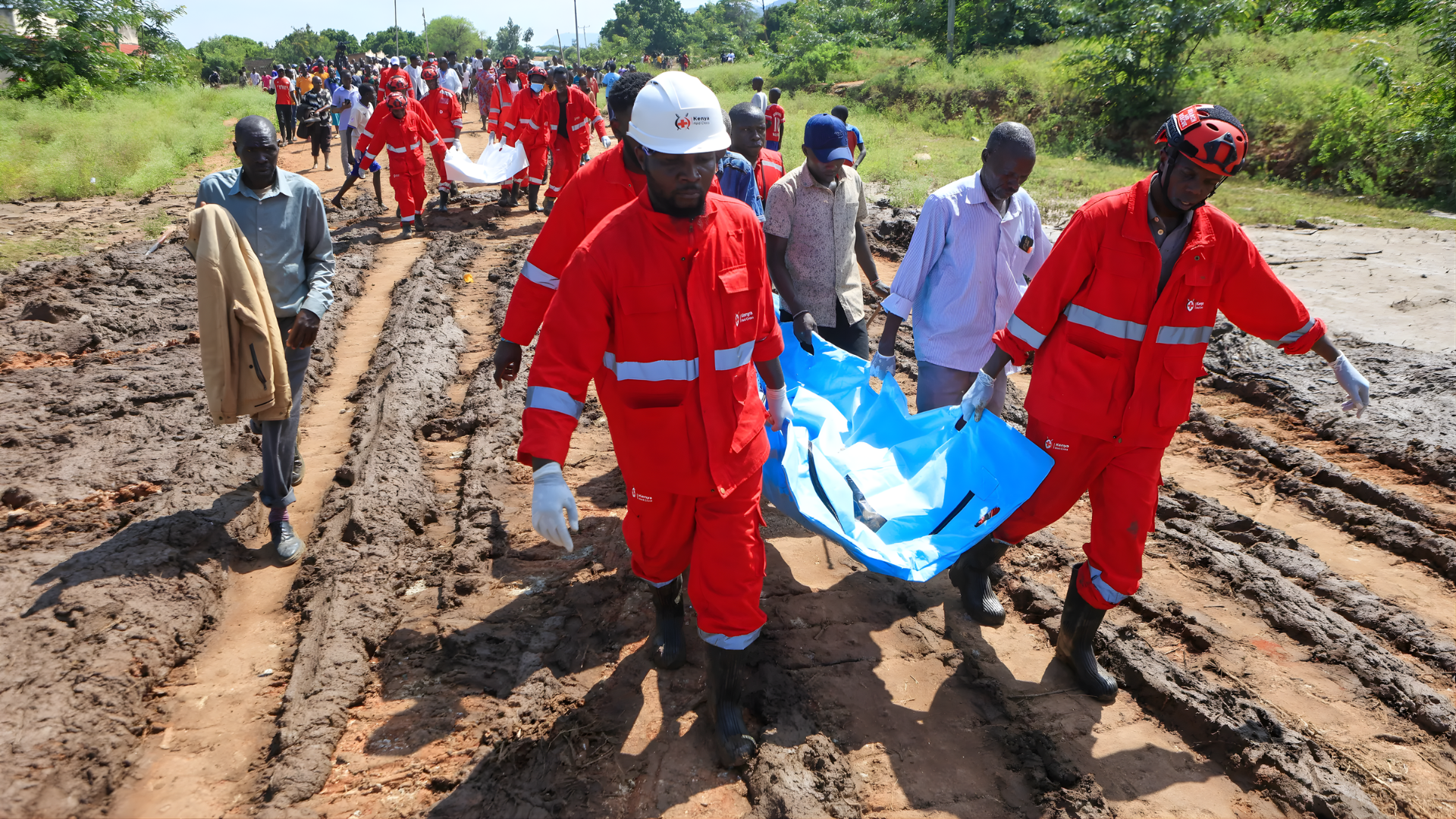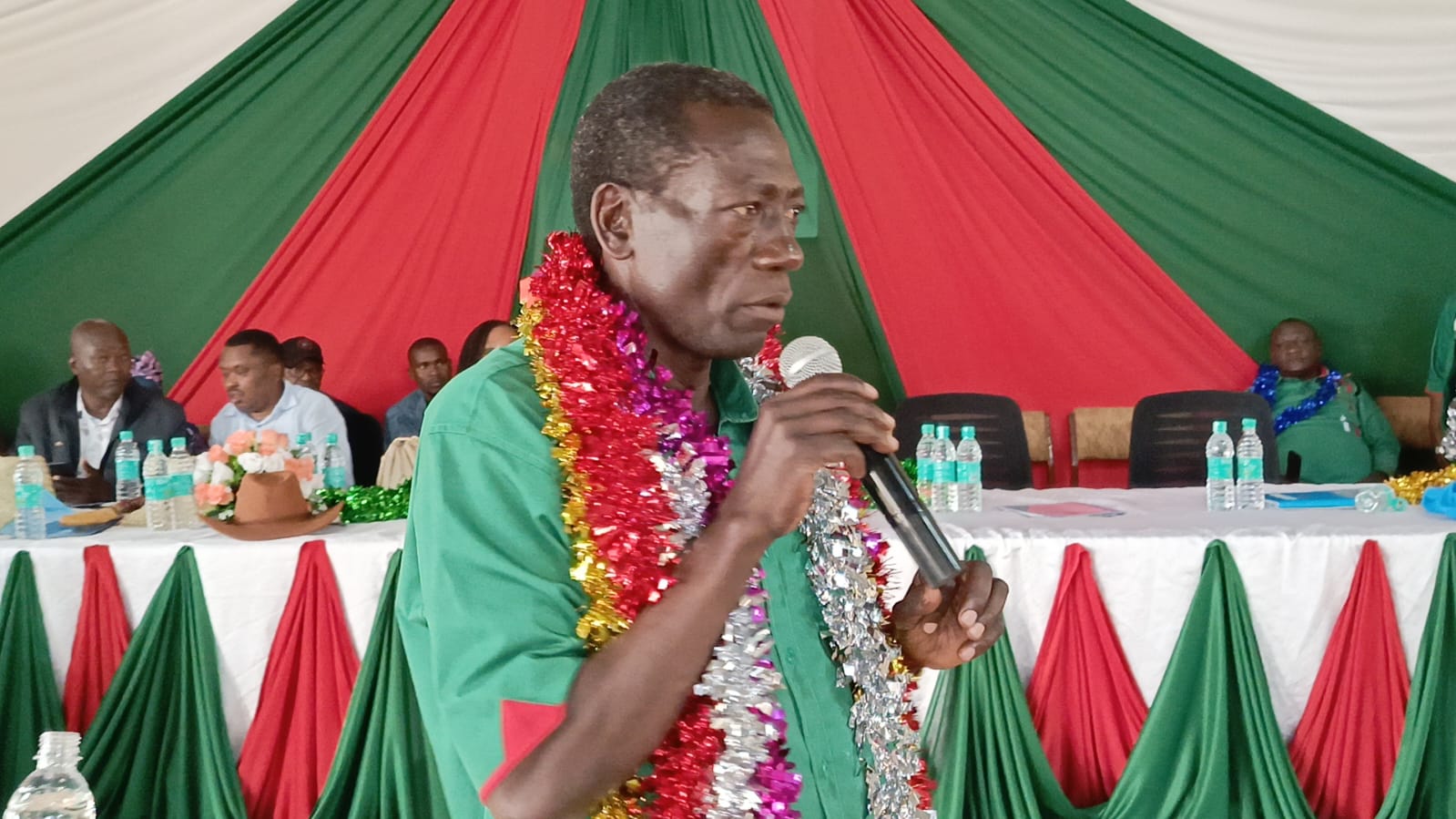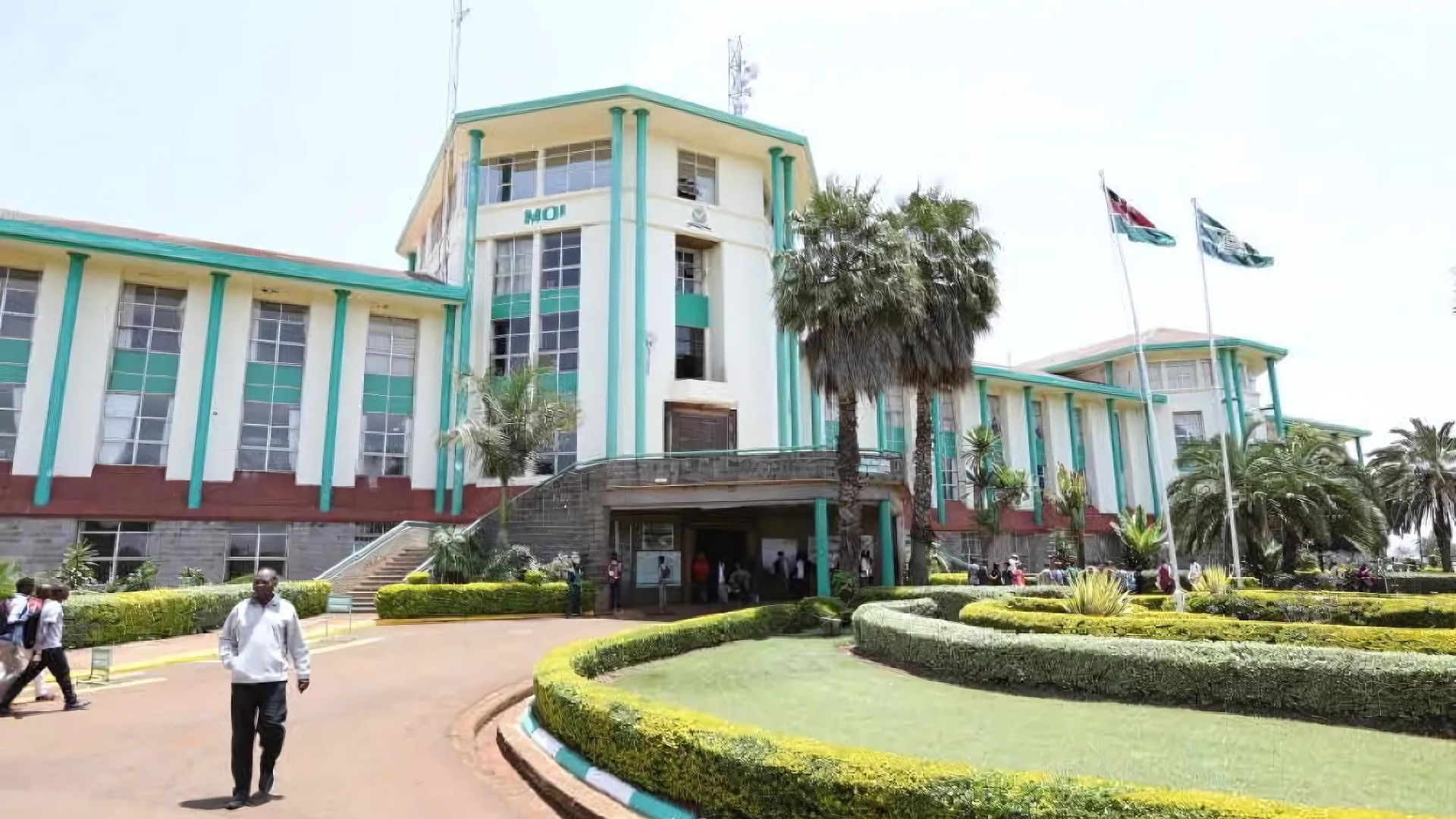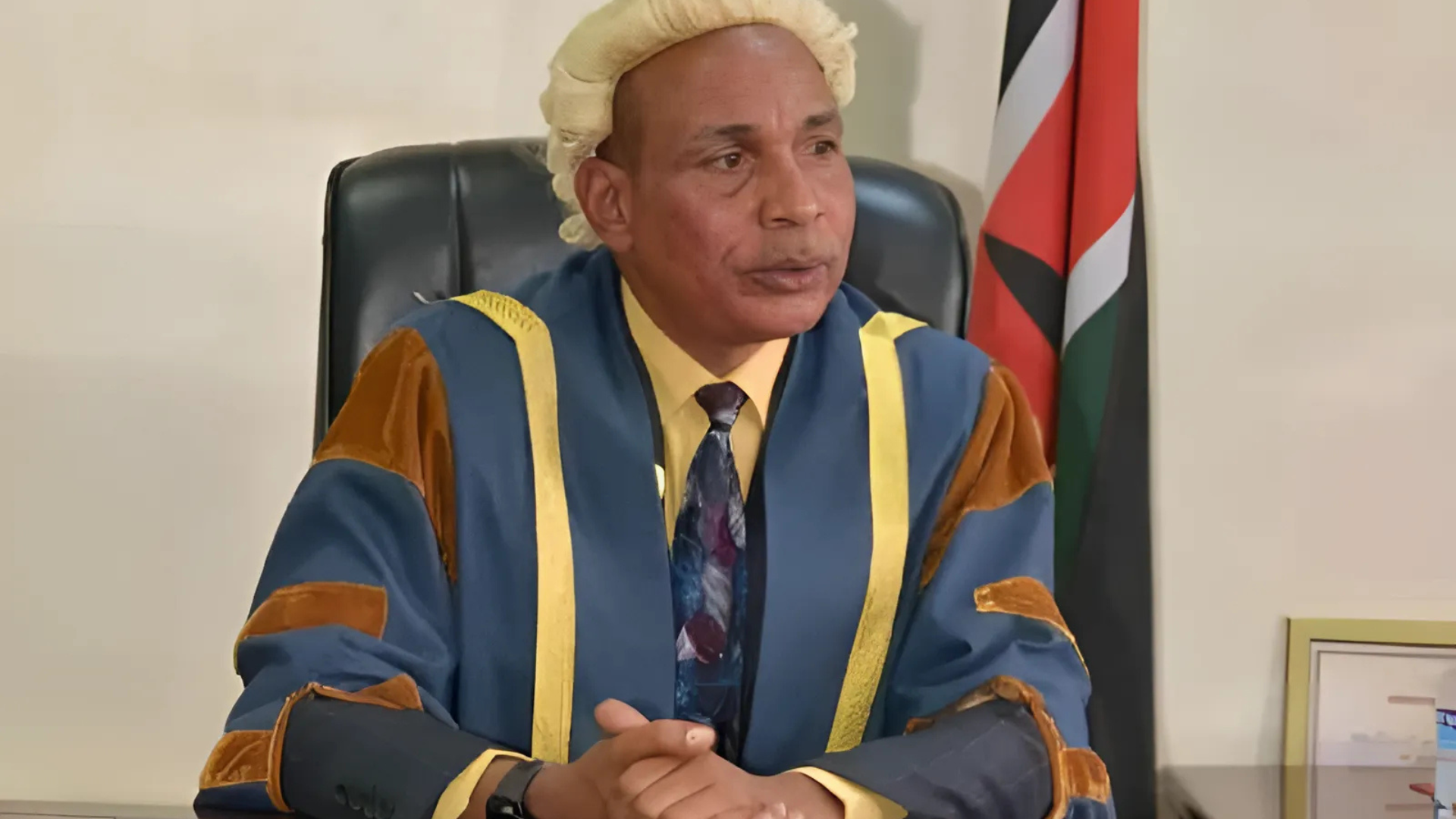The jagged escarpments of Elgeyo Marakwet County, etched into the Rift Valley's dramatic skyline like ancient scars, have long been both a cradle of life and a harbinger of peril for the hardy communities that call them home. On the stroke of midnight, November 3, 2025, that precarious balance shattered once more when a torrent of mud and rock cascaded down the slopes of Kibendo in Keiyo North, swallowing homes and livelihoods in its churning path. Just days after a cataclysmic mudslide in neighboring Chesongoch claimed 26 lives and left 25 others unaccounted for, the fresh disaster unfolded under a sky still weeping from days of unyielding rain, turning the region's red earth into a treacherous slurry. Elgeyo Marakwet Governor Wisley Rotich, roused from uneasy slumber by frantic calls from ward administrators, took to social media in the dead of night to break the grim tidings. "We have just experienced another landslide at Kibendo due to the torrential rains, and the unfortunate has happened," Rotich posted on his Facebook page, his words a stark beacon in the digital darkness for a county already reeling from grief. "The county disaster response team, office of the Area MP, and ambulances are already on site. I urge all residents of Elgeyo Marakwet County who live on unstable slopes to move to safer grounds immediately."
As dawn's first light pierced the mist-shrouded valleys on November 3, Kenya Red Cross teams, their vehicles laden with stretchers and emergency kits, raced along mud-slicked tracks toward the isolated hamlet of Kibendo. The organization, still stretched thin from the Chesongoch response, issued a terse alert via their X account at 6:46 a.m.: "Another landslide has been reported in Kibendo area, Keiyo North, Elgeyo Marakwet County. Kenya Red Cross response teams are en route to the site. Further updates will follow." By mid-morning, preliminary assessments painted a harrowing picture: at least two confirmed fatalities—a middle-aged farmer and his young daughter, their modest semi-permanent home reduced to a crumpled mound of debris—and several others trapped or missing beneath layers of silt and boulders. Scores of residents, their faces etched with shock and streaked with mud, had fled to higher ground, clustering in makeshift shelters at the local dispensary where volunteers distributed sodden blankets and hot mugs of porridge. "The ground just gave way like it was angry at us," recounted 42-year-old Mary Chebet, a maize farmer whose neighbor's plot vanished overnight, her voice trembling as she clutched a wailing infant. "We heard the roar first, then the screams. By the time we grabbed the children and ran, it was too late for others."
Kibendo, a cluster of about 200 households perched precariously on the Kerio Valley escarpment, embodies the raw tenacity of Elgeyo Marakwet's people. Here, Keiyo North's fertile terraces yield potatoes and beans that sustain families through lean seasons, while the escarpment's steep gradients channel rainwater into furious rivulets that carve deeper gullies with each storm. The area's geology—a volatile mix of volcanic tuff and weathered basalt—predisposes it to such cataclysms, exacerbated by decades of deforestation for charcoal and unplanned settlements creeping up the slopes. Heavy rains, which began intensifying on October 28 as part of Kenya's erratic short rainy season, had already swollen the Weiwei River and burst minor bridges, isolating remote villages. Meteorologists from the Kenya Meteorological Department had issued warnings for 46 counties, forecasting up to 100 millimeters of precipitation in 24 hours, but the ferocity caught even seasoned locals off guard. "These aren't just showers; they're biblical deluges washing away our history," lamented elder Joseph Kiprop, 68, who lost his goat pen and half his harvest in the slide, his gnarled hands gesturing toward the gouged hillside where a once-vibrant shamba now lay barren.
Governor Rotich's midnight confirmation galvanized a multi-agency frenzy. By 2 a.m., county ambulances from Iten and Tambach sirens wailing, converged on Kibendo, their headlights cutting through sheets of rain as they ferried the first wave of injured to the County Referral Hospital. The 34-year-old governor, a former teacher turned politician whose 2022 election victory hinged on promises of resilient infrastructure, arrived at the scene by helicopter at first light, his face drawn under the brim of a borrowed helmet. Flanked by Keiyo North MP Adams Kipsanai and area MCA Samuel Yatich, Rotich waded through ankle-deep muck to embrace survivors, his boots sinking into the ooze. "This is a wake-up call we cannot ignore," he told reporters huddled under tarpaulin tents, his voice hoarse from shouting orders over the downpour. "We've lost lives, but we will not lose hope. The county has activated its emergency fund—Sh50 million—to support relocation and rebuild efforts. But I implore everyone: if your home sits on a slope, pack up now. Safer grounds await in designated camps." Yatich, the MCA whose ward encompasses Kibendo, echoed the plea with raw emotion. "These are our people, our kin—farmers who feed the nation from these very hills. We've seen this before in 2010 and 2020; it's time for permanent solutions, not patches."
The Kibendo slide, though smaller in scale than Chesongoch's deluge, amplified the county's cumulative trauma. Just 48 hours prior, on November 1, a similar wall of mud had buried entire villages in Marakwet East's Chesongoch, Murkutwa, and Embobut wards, claiming 26 lives—including entire families swept away in their sleep—and displacing over 1,000 households. Interior Cabinet Secretary Kipchumba Murkomen, who helicoptered into the zone on November 2 amid a swarm of dignitaries, had tallied the toll at a somber press briefing amid the wreckage: 25 airlifted to Moi Teaching and Referral Hospital in Eldoret with fractures and lacerations, 30 still missing under tons of debris, and infrastructure losses mounting into hundreds of millions—roads cleaved like knife cuts, power lines dangling like severed veins. "Our thoughts and prayers are with the people of Endo, Sambirir, and Embobut wards following this devastating landslide," Murkomen stated, his tone a blend of sorrow and resolve as he coordinated with governors Stephen Sang of Nandi and Jonathan Bii of Uasin Gishu, whose counties dispatched ambulances and earthmovers. "Years of unchecked deforestation and unsustainable farming have conspired with these rains to create a national catastrophe. More lives hang in the balance if we don't act."
Kenya Red Cross, the linchpin of the relief mosaic, pivoted seamlessly from Chesongoch to Kibendo, their teams—clad in high-visibility vests and mud-caked boots—deploying drones for overhead scans and sniffer dogs for buried voids. By noon on November 3, they had established a forward operating base at Kibendo Primary School, its playground transformed into a triage hub buzzing with medics triaging hypothermia cases and distributing non-food items: hygiene kits, mosquito nets, and fortified porridge for malnourished children. "We're racing against the clock and the clouds," said Red Cross coordinator Esther Wanjiku, 38, as she oversaw the airlifting of a critically injured elder via military chopper, the rotors whipping mist into frenzy. "In Chesongoch, we pulled out miracles—families reunited after 36 hours under mud. Here, we'll do the same. But prevention is our ultimate prayer; these escarpments are tinderboxes waiting for the spark." The organization's efforts, bolstered by the National Disaster Operations Centre and Kenya Defence Forces engineers, extended to road clearance: the Kapyego-Chesoi-Kilangata artery, severed by the slide, saw bulldozers clawing at blockages by afternoon, restoring partial access for supply convoys.
The human mosaic of loss unfurled in heart-wrenching vignettes. In Kibendo, 28-year-old single mother Grace Jerop clawed through the rubble with bare hands until rescuers arrived, unearthing her brother's motorcycle but not his body, presumed swept into a gully. "He was our breadwinner, ferrying maize to Iten market," she whispered to a counselor, her eyes hollow as rain pattered on a plastic sheet overhead. Nearby, a cluster of elders recounted generational lore: the 2010 Kitony slide that entombed 14, the 2020 Chesegon floods that vanished 22 souls. "Our ancestors warned of the mountain's temper," intoned 72-year-old Paulina Too, her shawl sodden as she portioned ugali to orphans. "But poverty pins us here—higher ground means abandoning fields that feed us." Across the escarpment in Chesongoch, funerals commenced under leaky tents, mourners in black kitenge weaving dirges with pleas for divine reprieve, their shovels idle as KDF teams sifted for remains.
Broader forces conspired in this tragedy's prelude. The Kenya Meteorological Department's October 28 bulletin had flagged Elgeyo Marakwet among 46 counties at "high risk" for landslides, citing El Niño's lingering tails amplifying seasonal downpours. Yet, implementation lagged: early warning systems, piloted in 2023 with solar-powered sirens and SMS alerts, covered only 40 percent of vulnerable wards due to funding shortfalls. Deforestation, driven by charcoal demand in urban Eldoret, stripped stabilizing cover from slopes, while terrace farming—meant to anchor soil—often faltered under cash-strapped smallholders. "Climate change isn't abstract; it's the mud burying our children," asserted environmental activist Dr. Miriam Keter at a November 2 forum in Iten, her data charts showing a 35 percent rainfall spike since 2020. "We need reforestation mandates, subsidized gabions, and community relocation funds—not reactive burials."
National ripples underscored the crisis's scope. President William Ruto, convening an emergency cabinet huddle on November 3, pledged Sh200 million from the National Drought Management Authority for Rift Valley relief, while Roads CS Davis Chirchir fast-tracked repairs to the Eldoret-Iten highway, a lifeline now pocked with craters. Energy CS Opiyo Wandayi dispatched crews to restring power lines, restoring flickers to blacked-out villages by evening. "This is a clarion call for resilience infrastructure," Ruto declared in a televised address, his backdrop a map dotted with red alert zones. "From escarpment retaining walls to nationwide flood modeling, we'll invest in a Kenya that weathers the storm." Humanitarian partners, from World Vision erecting tented camps to UNHCR probing displacement thresholds, amplified the surge, with 500 families in Kibendo and Chesongoch receiving cash vouchers by November 4.
In Kibendo's recovering dawn on November 4, glimmers of fortitude emerged. Youth volunteers, organized by MCA Yatich, cleared debris from the village borehole, their laughter a defiant counterpoint to the grief. Schools reopened tentatively, teachers like 45-year-old Daniel Kipsang doubling as counselors, guiding pupils through trauma sketches. Governor Rotich, touring relocation sites in Tambach, unveiled plans for 200 semi-permanent units on stable plateaus, each with solar lanterns and rainwater harvesters. "We've endured; now we evolve," he told a circle of survivors, his hand on a young boy's shoulder. "These rains test us, but they won't break us." Chebet, nursing bruises but not spirit, planted quick-maturing kale seedlings in borrowed plots, her resolve a quiet vow. "The hill took much, but not our roots," she said, soil caking her palms.
As thunder rumbled anew on the horizon, Elgeyo Marakwet braced—a county of stoic souls, their escarpments both foe and forge. The Kibendo slide, etched into collective memory alongside Chesongoch's scars, demands not just aid but reckoning: policies that anchor slopes and souls alike. In the Red Cross tents, where medics mend and maps unroll, hope flickers like a candle in the gale—fragile, yet unquenched. For the people of the Rift's rim, survival is saga, each dawn a chapter reclaimed from the deluge.
The cascade of consequences extended beyond immediate peril. Agricultural losses, with over 500 acres of cropland entombed, threatened food insecurity for 10,000 residents, prompting the County Agriculture Department to airlift seeds and fertilizers on November 4. Livestock tolls—hundreds of goats and cattle lost—rippled through markets, inflating meat prices in Iten by 20 percent. Psychosocial support teams, led by the National Council for Persons with Disabilities, fanned out to aid the vulnerable: elderly confined to wheelchairs, their ramps now buried; orphaned children navigating loss with crayons and counselors. "Trauma here is layered, like the mud itself," confided therapist Lydia Simiyu, 35, as she facilitated a circle in Embobut, voices rising in shared lament. "We heal by naming the fear, then planting against it."
Policy echoes resounded in Nairobi's corridors. The Senate's Environment Committee, chaired by Marakwet East's Kangogo Bowen, summoned experts for hearings on November 5, grilling officials on the 2023 El Niño contingency's gaps. "Warnings were whispers; action must roar," Bowen asserted, his constituency's wounds fresh. Proposals swirled: a Sh5 billion national escarpment stabilization fund, mandatory soil audits for settlements, and integrated early warning apps linking weather data to community radios. International donors, alerted by Al Jazeera's aerial feeds, pledged €2 million from the EU's humanitarian pot, while USAID eyed agroforestry grants to replant 1,000 hectares with indigenous acacias.
In quieter moments, faith anchored the afflicted. At Kibendo's evangelical chapel, rebuilt on firmer footings, Pastor Elias Rotich— no kin to the governor—led a sunrise service on November 4, congregants swaying to hymns amid stacked sandbags. "The Lord rebukes the storm, but calls us to wisdom," he preached, his flock nodding through tears. Across the valley in Chesongoch, traditional healers brewed herbal tonics from neem and lemongrass, blending Kalenjin lore with modern meds. Jerop, sifting memories from rubble, unearthed a family Bible, its pages mud-flecked but intact. "Proof we're meant to endure," she murmured, tracing verses by lantern light.
As November's middle waned, forecasts hinted at easing rains, but scars lingered—a topography forever altered, communities forever vigilant. Rotich, poring over blueprints in his Iten office, envisioned resilient futures: terraced villages with retention ponds, youth-led monitoring crews with walkie-talkies. "Tragedy forges tomorrow," he reflected to aides, maps aglow on his desk. For Chebet and Kiprop, Too and Simiyu, the escarpment's whisper endures—a reminder that in Kenya's volatile embrace, survival is not surrender, but symphony with the storm.























